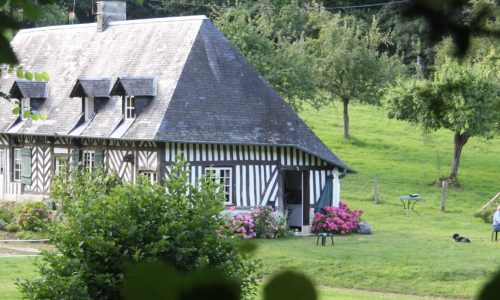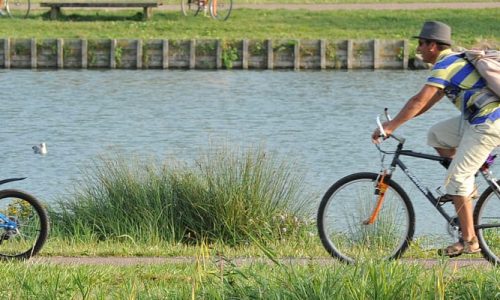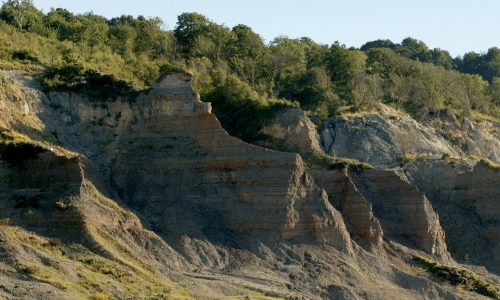Villers-sur-Mer, a town at the centre of the world
Villers-sur-Mer is the first French town to be crossed by the Greenwich meridian! The Greenwich meridian passes through the Royal Observatory in Greenwich, United Kingdom. It then meets Europe in… Villers-sur-Mer!
The Greenwich meridian is the universal benchmark of space (for measuring longitude) and of time (for defining time zones). Situated opposite the 180th meridian, it divides the globe into Eastern and Western hemispheres.
The Paléospace l’Odyssée (see below) offers an interpretation of this.
The exact point where the Meridian enters Villers-sur-mer is marked on the seawall.
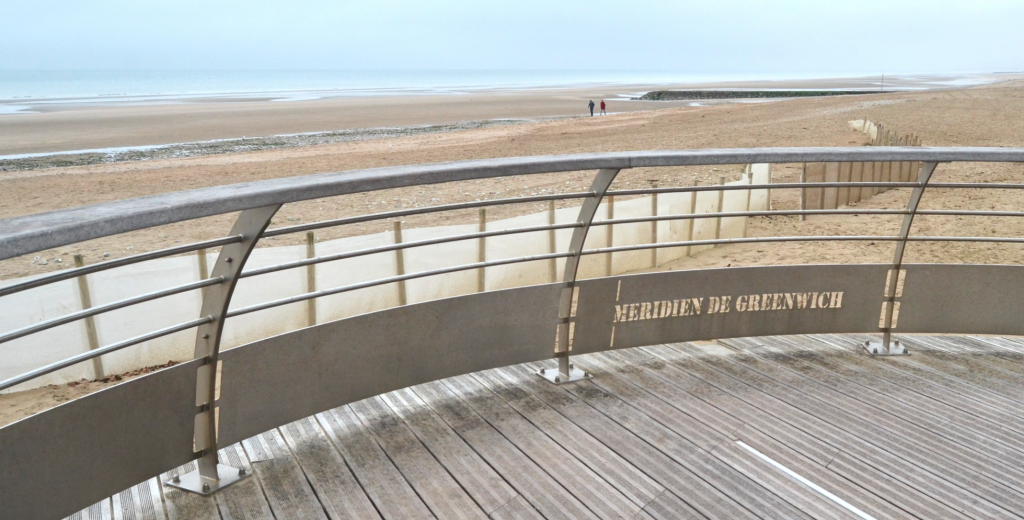
From the centre of the world to the city centre of Villers-sur-Mer
The Villers-sur-Mer seaside resort was founded in 1856, three years before that of Deauville and has been developed harmoniously by preserving the characteristic architecture of seaside resorts. The seaside shelters sumptuous villas that open up to a charming city centre which is lively all year long.
The city centre is particularly popular among year-round residents and tourists as they can find a wide range of local products, restaurants and shops of all kinds.
In addition to the Town Hall, the market square and the Villare, centre of the social and cultural life of Villers-sur-Mer, the city centre also hosts the famous Saint-Martin church with beautiful stained-glass windows.
A church classified in the inventory of historical monuments (Monument historique)
The Saint-Martin church is dedicated to St. Martin, apostle of the Gauls, and depends on the diocese of Bayeux and Lisieux. It has been classified as “Monument historique” in France since December 20, 2006 for its high architectural quality and decoration, particularly remarkable on the stained-glass windows.
Designed by the Duhamel-Marette studio of Evreux between 1874 and 1898, the stained-glass windows of the Saint-Martin church represent the life of Jesus in the apse and those of Saint Joseph and the Virgin Mary in the transepts. Others highlight the fathers of the church, the life of St. Martin – patron saint of the church – or the life of St. Germaine Cousin to pay tribute to Germaine Demachy, Countess of Bearn, deeply attached to Villers-sur-Mer.
The church also hosts a masterpiece by François-Jean-Baptiste-Benjamin Constant. Better known as Benjamin Constant (1845-1902), he was a renowned portraitist and a painter-decorator for large projects such as the Town Hall, the Opéra-Comique and the Sorbonne University in Paris.
Hung on the west wall of the south transept, his painting stands alongside the large stained-glass window dedicated to St. Joseph and completed in 1878.
The church has been subjected to major renovation works started by the new municipal council. It’s a place of worship, but also an essential part of the architectural heritage of Villers-sur-Mer.
It’s a must-see!
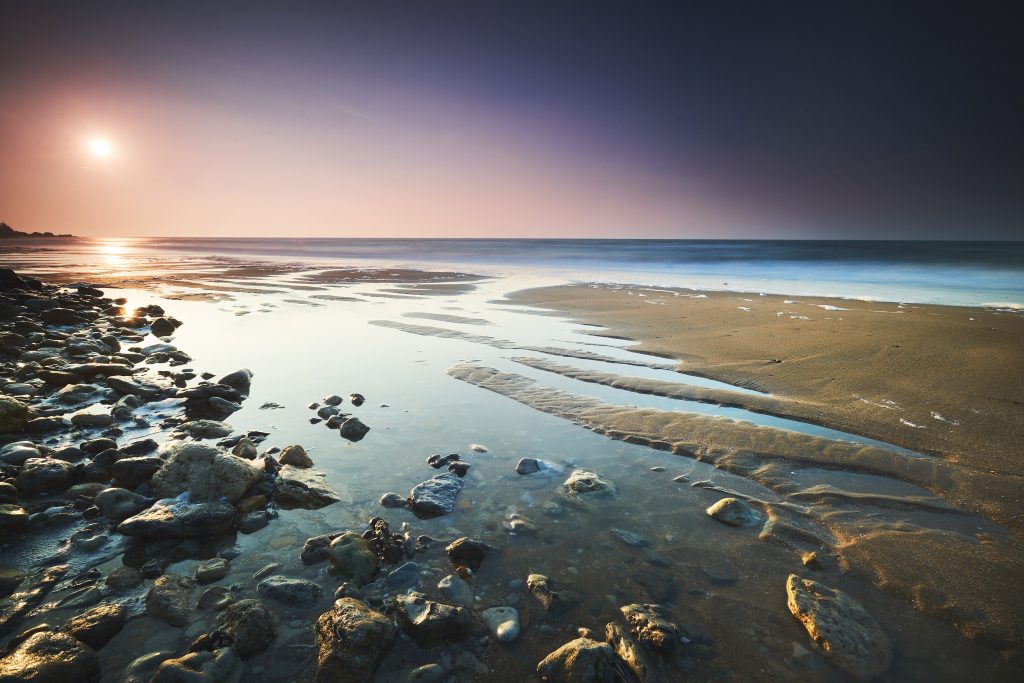
A 2.1 km natural beach
What makes the Villers sur-Mer beach special is an extraordinary and well-preserved natural heritage. But it is also one of the few on the coast to remain almost entirely visible for 2.1 km. Here, dykes stretching along the seaside are just perfect to walk and contemplate the landscape.
Accessible even from the city centre, the beach has remained quite unspoiled to better preserve the fauna and the flora living here. A long white strip of beach cabins offers a timeless and typical Norman landscape in summer.
The west end of this relaxing beach leads to the Vaches Noires cliffs, an archaeologically interesting place with a unique landscape. To the North-East, you’ll enjoy the view of the Cap de la Hève and its rotating lighthouse.
To the East, the Blonville-Villers marsh, a preserved natural park.
An extraordinary natural heritage: the marsh
About thirty hectares of marsh are found to the east of the seaside resort, closer to Blonville-sur-Mer. Despite its proximity to the sea, the marsh is still fed by the fresh water coming from the surrounding hillsides.
This preserved natural park with a varied fauna and flora is a natural environment recognized in the ZNIEFF type 1 inventory (Zone Naturelle d’Intérêt Ecologique Faunique et Floristique).
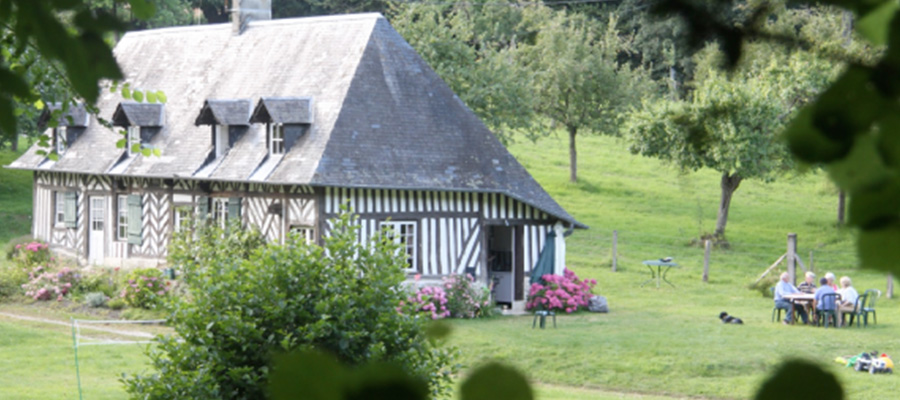
The Pays d’Auge countryside
On the heights of Villers-sur-Mer, several sunken paths will make you feel as if you were in a real postcard of the Pays d’Auge.
Moreover, the GR walking route stretching on the Vaches Noires cliffs offers an amazing view on this extraordinary place.


